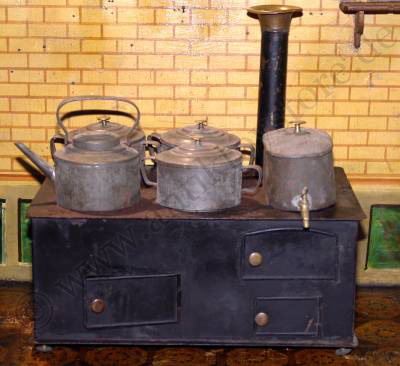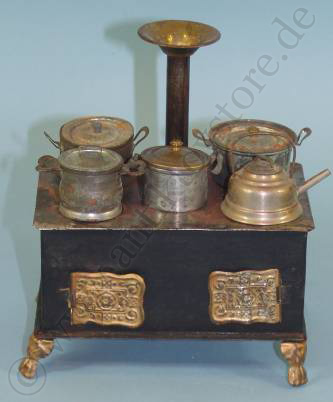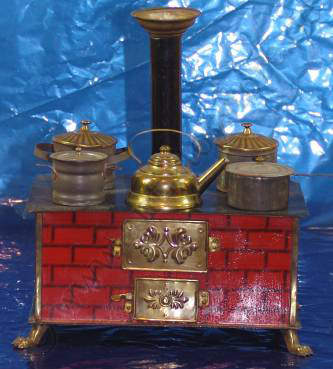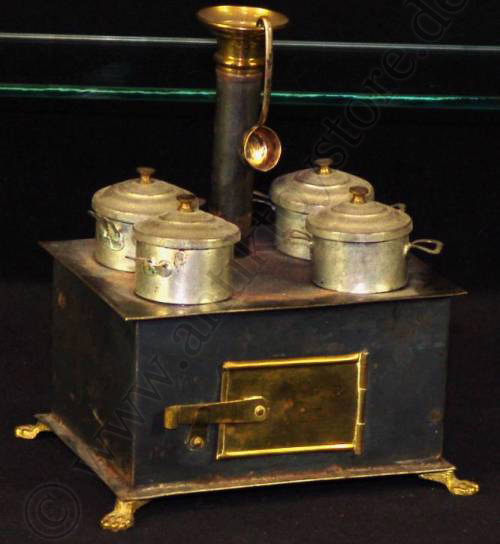History of the doll stoves
A doll's hearth is a diminished replica of a herd that serves children as a toy. Such herds came in the middle of the nineteenth century. Their greatest distribution was from about 1870 to 1940. They were functioning flocks, on which they could actually be cooked.
"Children love tiny things, especially when they resemble children's parents' household. Children like moving things like drawers that can be pushed up and down, doors that can be opened and closed, and they like to play with devices that work. Children love fire and water - and they like to mash and eat."
All these preferences of children are fulfilled by a doll's heart. Miniature heroes as an exact replica of large fire herds came in the second half of the 19th century. For wealthy strata, in which the children were not involved in domestic chores anyway, the herd of puppies offered an ideal toy and education. In addition to the kitchenettes, which suggested three rooms with their own space but were not suitable for "real" cooking because of the spatial restriction, about the same time larger cooking ranges were developed with dishes. These freestanding flocks of metal were fueled with alcohol and were equipped with several hotplates, an oven and water boats for warm water, depending on the size.
These iron herds of sheep corresponded technically to that of J.P. Bérard and Benjamin Thompson. To take advantage of the heat, the pots were hung directly into the open fire. A heel in the side wall of the pots or a holder prevented the pots falling into the hearth. The flames were equipped with two to six cooking holes, an oven and several doors, behind which the furnace was concealed. Towards the end of the 19th century, the herds were increasingly decorated with embossed metal on the side walls, bolts and feet made of brass, as well as enamels. These herds were also offered after 1900. Until around 1920 smooth white flock with straight unpainted legs penetrated. Curiously, as early as 1902, the herd of sheep were offered, which could be connected to city gas pipelines. However, they could not resist the alcohol or esbit-fired models. From 1909 Märklin also offered electric dolls. These were considered to be particularly safe, but they were considerably more expensive, and could only be maintained much later on against the many inherited sources of fire.
Girl education at the doll's hearth
The playful imitation of the activities of the mother or the cook should promote the education of little girls to the housewife. Doll cookbooks, such as Anna Anna, by Henriette Davidis, published in 1855, praised cookery as the most important feminine art to play. Playfully, girls should be prepared for their later domestic effects. In the course of the nineteenth century, the activity in the house was increasingly understood as a profession requiring education or special education. Doll cookbooks came to the market at about the same time as the dolls' herds. And, together with the widespread women's counselors and household books of that time, formed the basis for a domestic girls education program. This inclusion is shown, for example, in the introductory section of the "Little School for Play and Life", published in 1896.
Manufacturer
The first functional puppets were made by individual craftsmen. Around 1800, the first children's cookers were made from rolled sheet metal in Germany. Around 1820 came the first serial production of such flock. From catalogs and illustrations, for example, on the title page of Julie Bimbach's doll-book, it can be seen that in the middle of the nineteenth century various companies had already produced a large number of different models. From about 1870 onwards, the industrial progress of sheet metal processing was able to machine sheet metal, to press it into molds and to draw it. Thus, the hearth could be decorated richly and completely differently. As early as 1895, Bing offered only 5 pages of sheet metal for children in their catalog. In addition, there were about five other manufacturers, including Märklin and Kindler & Briel (now Kibri). Since the producers did not mark their products, it is only possible to assign them to a particular manufacturer by means of the ornaments and the design of the herd. Märklin, in particular, has received a large number of catalogs, from which it is possible to see the wealth of forms at that time. The models were extremely durable. Many models have been produced for over 30 years or more. Most of the models were also manufactured in graded sizes, which were placed into each other for transport to the dealer.
large doll stoves
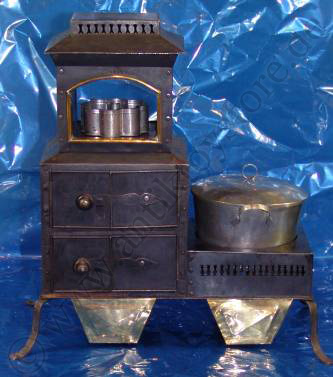
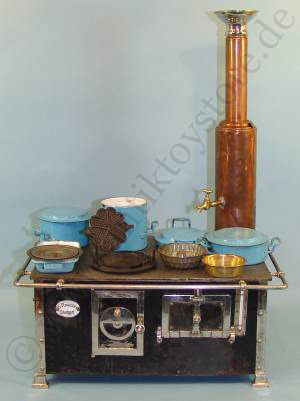
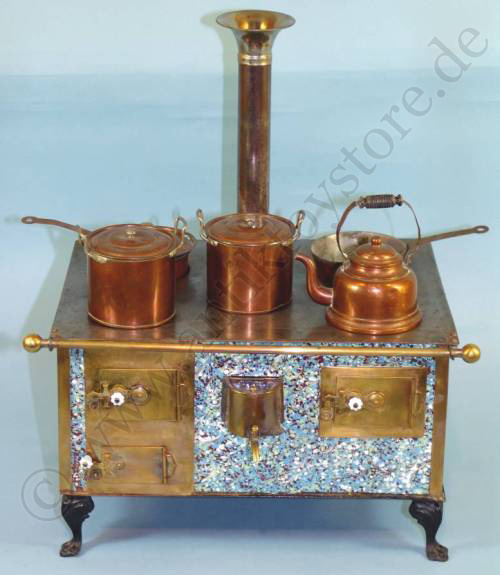
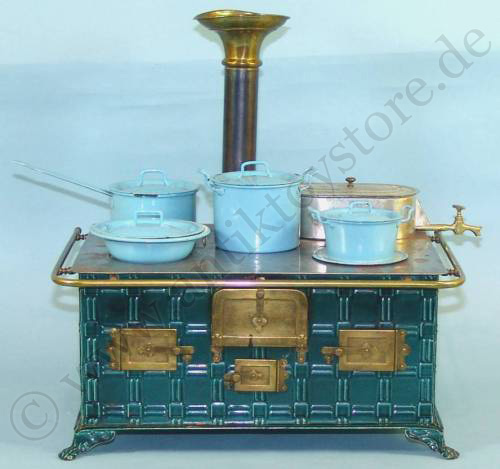
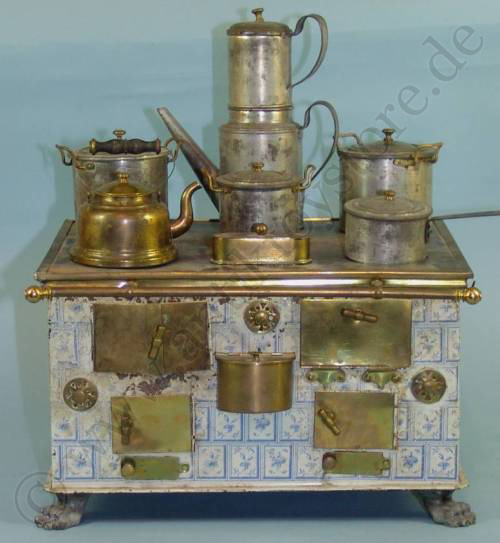
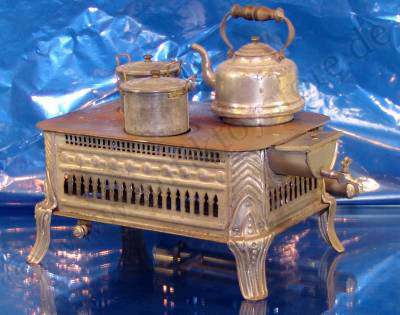
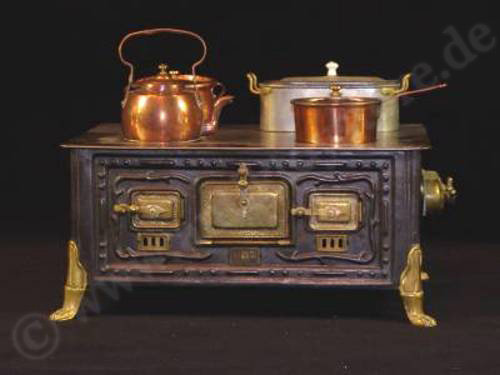


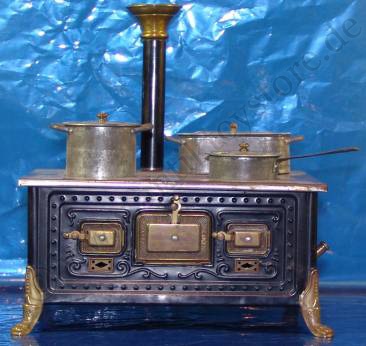
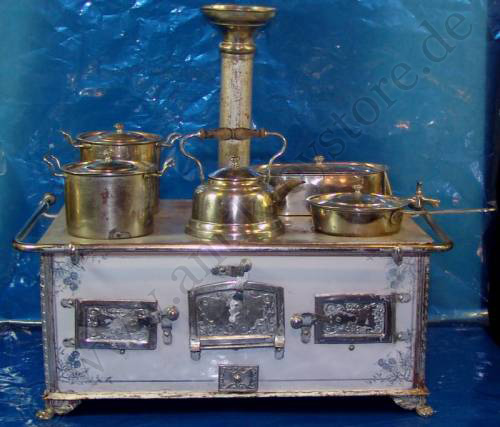

small doll stoves
